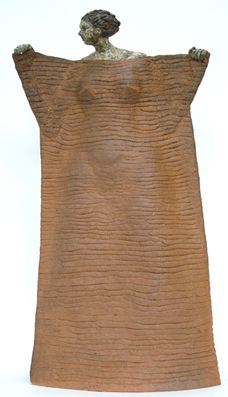Art & Imagination, part II
Monday, April 24th, 2006Cennino Cennini devotes his Il Libro dell’ Arte (late 14th c.) to a practical explanation of the materials and techniques of painting. And yet Cennino also writes of painting as an occupation that deserves “to be crowned with poetry”, because the painter has the ability to compose from the imagination, “presenting to plain sight what does not actually exist.”
 It might seem there is a mismatch between focusing on the physical aspects of the work, and at the same time emphasizing the role of imagination in creating art. But this combination of the mundane and the fanciful is appropriate for a simple reason: an artist creating from the world of the mind must nonetheless work in the world of the materials. The physical nature of those materials, and the way the artist uses them, will inevitably influence how the inner world of the mind is discovered and expressed.
It might seem there is a mismatch between focusing on the physical aspects of the work, and at the same time emphasizing the role of imagination in creating art. But this combination of the mundane and the fanciful is appropriate for a simple reason: an artist creating from the world of the mind must nonetheless work in the world of the materials. The physical nature of those materials, and the way the artist uses them, will inevitably influence how the inner world of the mind is discovered and expressed.
Contemporary artist Hanneke van den Bergh recognizes and makes use of this interplay of the imaginary and the physical in her clay sculpture. She explains “I like to make the heads by moving a little lump of clay until I can just see the face. I like this quality of the imaginary form beginning to emerge from the raw material.” Van den Bergh does not attempt to disguise the properties of her materials. In the example shown here, Danae III, she leaves visible the coils with which she constructs the main form. The contrast of the repeating pattern of coils with the rhythm of the body contributes to the expressive effect of the work. “By avoiding too much detail,” she says, “I maintain the contrast between material — the physical — and the imaginary.”
_________
Related:
Art and imagination: Cennino says…